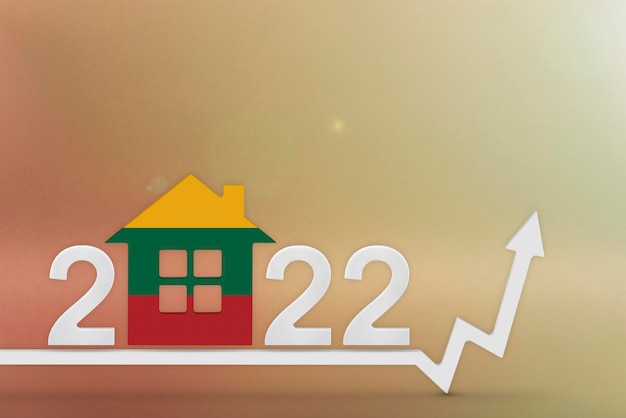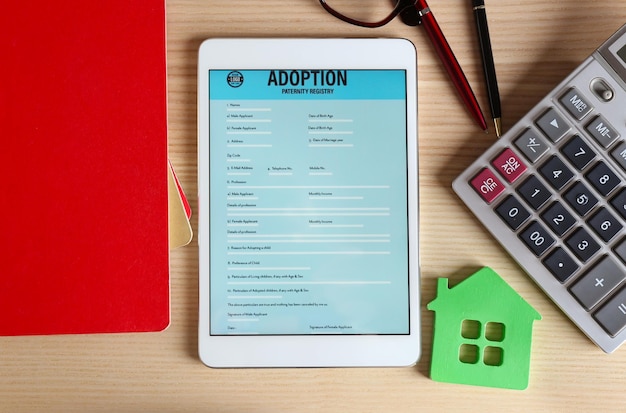Is Refinancing Your Mortgage Worth It? Rates Below 6.8% in 2025

Refinancing your mortgage in early 2025 might still be a worthwhile option if you can secure rates below 6.8%, potentially leading to significant savings and improved financial flexibility based on your individual circumstances and long-term financial goals.
Considering is refinancing your mortgage still worth it? Analyzing rates below 6.8% in early 2025 can be a smart move for homeowners looking to potentially lower their monthly payments, shorten their loan term, or tap into their home equity, but whether it makes sense depends on several factors we’ll explore.
Understanding Mortgage Refinancing
Mortgage refinancing involves replacing your existing mortgage with a new one. The primary reasons homeowners refinance are to obtain a lower interest rate, shorten the loan term, or convert from an adjustable-rate mortgage (ARM) to a fixed-rate mortgage, or vice versa.
But before diving into the potential benefits, it’s crucial to understand the basics of how refinancing works. This involves comparing your current mortgage terms with prevailing interest rates and assessing the costs associated with refinancing.
Types of Mortgage Refinancing Options
There are several types of refinance options available, each catering to different financial goals:
- Rate and Term Refinance: This involves changing your interest rate, loan term, or both. It’s often used to lower monthly payments or pay off your mortgage faster.
- Cash-Out Refinance: This allows you to borrow more than your current mortgage balance and receive the difference in cash. You can use this cash for home improvements, debt consolidation, or other financial needs.
- Cash-In Refinance: This involves paying down your mortgage balance to lower your loan-to-value (LTV) ratio, potentially qualifying you for a better interest rate.
- Streamline Refinance: This is a simplified refinance process, often available for government-backed loans like FHA or VA loans, with less documentation and faster approval times.

Ultimately, understanding the different types of refinancing will help you determine which option best aligns with your financial objectives, ensuring you make an informed decision when considering is refinancing your mortgage still worth it? Analyzing rates below 6.8% in early 2025.
Current Mortgage Rate Environment
Analyzing the current mortgage rate environment is crucial when considering refinancing. In early 2025, rates below 6.8% present a potentially favorable landscape for homeowners. However, this needs to be viewed within the context of broader economic conditions.
Economic indicators such as inflation, employment rates, and Federal Reserve policies significantly influence mortgage rates. Keeping an eye on these factors will provide a clearer picture of whether current rates are likely to remain stable, increase, or decrease.
Factors Influencing Mortgage Rates in 2025
Several factors play a role in determining mortgage rates:
- Inflation: Higher inflation typically leads to higher interest rates, as lenders demand a greater return to offset the erosion of purchasing power.
- Economic Growth: A strong economy often results in higher interest rates, as increased demand for borrowing drives up costs.
- Federal Reserve Policy: The Fed’s monetary policy decisions, such as adjusting the federal funds rate, can significantly impact mortgage rates.
- Bond Market: Mortgage rates often track the yield on 10-year Treasury bonds, as these bonds are seen as a benchmark for long-term interest rates.
Assessing the current and projected economic climate is essential to gauge the potential longevity of rates below 6.8%. This assessment will help you make a well-informed decision about whether is refinancing your mortgage still worth it? Analyzing rates below 6.8% in early 2025.
Breaking Down the Costs of Refinancing
While a lower interest rate can be enticing, refinancing isn’t free. Understanding the associated costs is crucial to determining if it’s financially beneficial. These costs, often referred to as closing costs, can add up quickly and impact your overall savings.
Typical refinancing costs include appraisal fees, credit check fees, origination fees, title insurance, and recording fees. These expenses can range from 2% to 5% of the loan amount, so it’s essential to factor them into your calculations.

Calculating Your Break-Even Point
Determine how long it will take to recoup the costs of refinancing through monthly savings. This is known as the break-even point. To calculate this, divide the total refinancing costs by the monthly savings achieved through the new mortgage.
For example, if your refinancing costs are $5,000, and you save $200 per month, your break-even point is 25 months ($5,000 / $200). If you plan to stay in your home longer than this period, refinancing is likely a sound financial decision.
Understanding the costs of refinancing and calculating your break-even point is vital in assessing whether is refinancing your mortgage still worth it? Analyzing rates below 6.8% in early 2025. This will provide a clear understanding of the financial implications and help you make an informed decision.
Assessing Your Personal Financial Situation
Refinancing isn’t a one-size-fits-all solution. Your personal financial situation plays a significant role in determining whether it’s the right move. Factors like your credit score, debt-to-income ratio (DTI), and long-term financial goals should be carefully evaluated.
Lenders will assess your creditworthiness to determine your eligibility for a refinance loan and the interest rate they offer. A higher credit score typically results in a lower interest rate, translating into greater savings over the life of the loan.
Key Financial Factors to Consider
Before applying for a refinance, consider the following:
- Credit Score: Aim for a credit score of 740 or higher to qualify for the best interest rates.
- Debt-to-Income Ratio (DTI): Keep your DTI below 43% to demonstrate your ability to manage debt effectively.
- Loan-to-Value Ratio (LTV): A lower LTV ratio can result in a better interest rate, as it indicates less risk to the lender.
- Long-Term Financial Goals: Determine how refinancing aligns with your overall financial objectives, such as reducing debt, saving for retirement, or funding education expenses.
By carefully assessing your personal financial situation, you can determine if is refinancing your mortgage still worth it? Analyzing rates below 6.8% in early 2025, aligning with your financial goals and providing long-term benefits.
Benefits of Refinancing at Lower Rates
When mortgage rates dip below a certain threshold, such as 6.8% in early 2025, the potential benefits of refinancing become increasingly attractive. Lower rates translate directly into several financial advantages for homeowners.
One of the most immediate benefits is reduced monthly payments. A lower interest rate means less of your payment goes towards interest, freeing up cash for other financial goals. Additionally, refinancing can shorten your loan term, allowing you to pay off your mortgage faster and save on interest over the life of the loan.
Exploring the具体Savings Potential
To illustrate the potential savings, consider a homeowner with a $300,000 mortgage at a 7.5% interest rate. By refinancing to a 6.5% rate, they could save approximately $200 per month, or $2,400 per year.
Moreover, refinancing can provide an opportunity to build equity faster. When you shorten your loan term, a larger portion of each payment goes towards the principal, accelerating equity accumulation. This can be particularly beneficial if you plan to sell your home in the future or use the equity for other investments.
Quantifying the potential savings and considering the long-term financial advantages of is refinancing your mortgage still worth it? Analyzing rates below 6.8% in early 2025 will help you make an informed decision.
Navigating the Refinancing Process
Refinancing a mortgage involves several steps, from gathering documents to closing the loan. Understanding this process can help ensure a smooth and efficient experience. Typically, the process starts with checking your credit score and gathering necessary financial documents.
The application process involves providing information about your income, assets, and debts. Lenders use this information to assess your creditworthiness and determine the interest rate and terms they can offer.
Steps to a Successful Refinance
Here’s a simplified guide to the refinancing process:
- Check Your Credit Score: Review your credit report and address any errors or discrepancies.
- Gather Documents: Collect documents such as pay stubs, W-2s, tax returns, and bank statements.
- Shop Around: Compare offers from multiple lenders to find the best interest rate and terms.
- Complete the Application: Fill out the loan application and provide all required documentation.
- Undergo Appraisal: The lender will order an appraisal to determine the value of your home.
- Close the Loan: Review the loan documents, sign the paperwork, and finalize the refinance.
By understanding these steps and preparing accordingly, you can successfully navigate the refinancing process and determine is refinancing your mortgage still worth it? Analyzing rates below 6.8% in early 2025.
| Key Point | Brief Description |
|---|---|
| 💰 Lower Rates | Refinancing can secure rates below 6.8% in early 2025. |
| ⏱️ Break-Even Point | Calculate how long it takes to recoup refinance costs. |
| 📊 Financial Situation | Assess credit score, DTI, and long-term goals. |
| 🏡 Equity Building | Refinancing can help build equity faster by shortening term. |
Frequently Asked Questions
▼
Typically, a credit score of 740 or higher is recommended to qualify for the best refinance rates. However, some lenders may work with lower scores, but expect higher interest rates.
▼
The refinancing process typically takes between 30 to 45 days. This includes the time for application, appraisal, underwriting, and closing.
▼
Common costs include appraisal fees, credit check fees, origination fees, title insurance, and recording fees. These expenses can range from 2% to 5% of the loan amount.
▼
Refinancing while unemployed can be challenging. Lenders require proof of stable income. Alternatives might include using assets or a co-signer with stable employment.
▼
Lenders generally prefer a DTI of 43% or lower. Lower DTIs indicate a better ability to manage debt, increasing the chances of refinance approval with favorable terms.
Conclusion
In conclusion, determining is refinancing your mortgage still worth it? Analyzing rates below 6.8% in early 2025 can be achieved by carefully assessing financial factors, calculating the break-even point, and understanding the potential savings and benefits.





